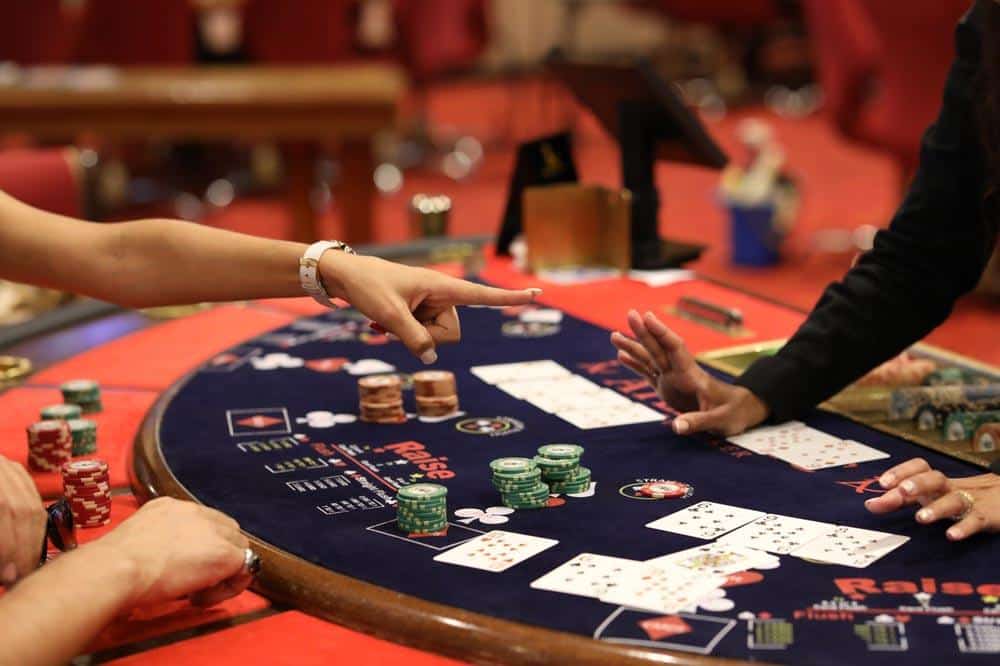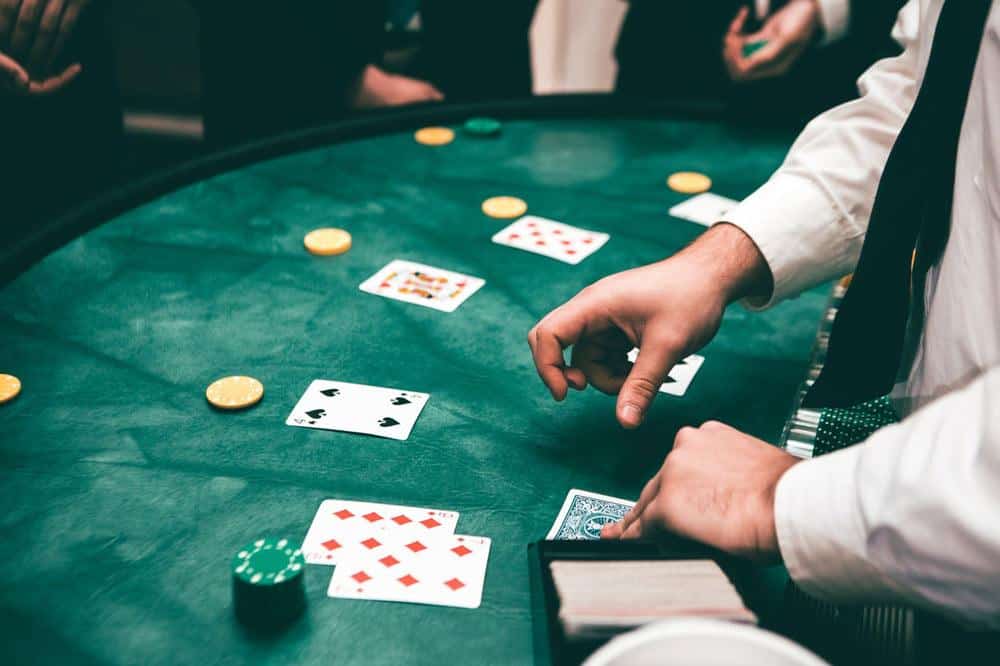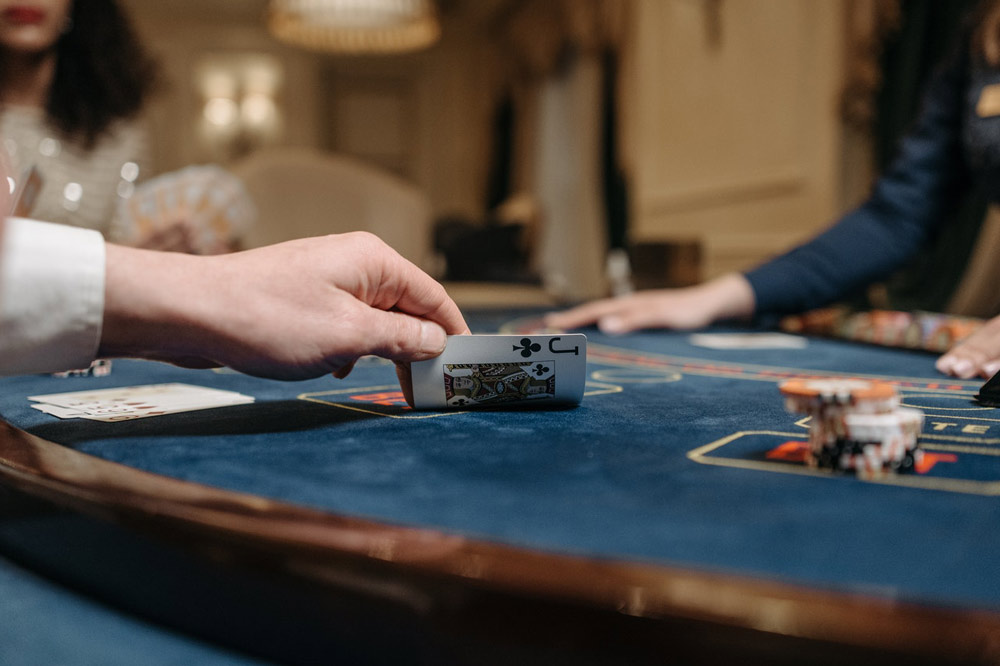Blackjack insurance is a side bet you can take when playing your favourite variation of 21. While finding the best crypto casino may not be easy, you will have little trouble knowing the right time to place this bet after reading our guide.
Gamblers learning the game must ask themselves how well they understand the insurance bet and the best time to use it. Read on as we explore all you need to know about it.
What Is An Insurance Bet In Blackjack?
The Blackjack insurance bet is a side bet gambler can place during gameplay. A player usually sets it when the dealer displays their first card as an Ace. The side bet is an addition to the player’s original bet and is essentially insurance if the dealer ends up with a blackjack score. If you win this insurance bet, the aim is to recover some of your losses if the dealer hits 21.
Insurance Bet Odds
The payout for a Blackjack insurance bet is typically 2 to 1. You must bet the same amount as your original bet when that hand was dealt out to qualify for winnings on the insurance bet. In instances where the dealer does not get a blackjack on their subsequent card, you will lose your Blackjack insurance bet.
Dynamics Of Blackjack Insurance
Blackjack insurance will usually be placed when the dealer’s upcard is an Ace, and you anticipate their final score will be a blackjack. This means that the dealer’s next card will be valued at 10. You may ask why a player would place a bet on the outcome of the dealer’s cards. Well, in Blackjack circles, this is known as a form of security that safeguards your existing bet.
Blackjack insurance is viewed as a hedge against a dealer’s result of blackjack. With this insurance, a player can recover some of their losses if the dealer hits the perfect score. Despite its appearance as a bet that piggybacks off your original bet, this couldn’t be further from the truth. An insurance bet is an entirely separate bet with very little to do with your current hand or your chances of beating the dealer.

Casinos have designed blackjack insurance to look deceptively like a side bet during an active game round. The entire pattern, including the name, betting, and payout structure, is created to appeal to any gambler who fears that the dealer may strike a blackjack. This fear that grips a gambler sometimes leads them to pay a little more to break even, even though they may lose their main hand.
In essence, insurance is not so much about protecting your original bet or salvaging a bad hand. Instead, it is a straightforward standalone bet with odds of 2 to 1 where you will only win if the dealer scores a 10-value card, i.e., a face card or 10, on their next draw.
Blackjack Insurance Rules
Although there are multiple variations of blackjack that each have its specific rules, you can be sure that the insurance rule is the same across all variations.
There are unique reasons for blackjack insurance being different when talking about side bets. As the name suggests, side bets usually occur on the side of the game, and you are free to bet whatever you want. With blackjack insurance, however, you can only bet a specific amount. Due to this, the insurance is classified as a side bet.
The three basic rules of blackjack insurance are:
- the dealer must display an Ace
- you must place an insurance bet of 50% of the original bet
- the dealer must draw a 10-value card that will then pay you out 2 to 1
Seasoned gamblers agree on many aspects of the game but often disagree on how they view blackjack insurance. Some enthusiasts see insurance as a method that reduces variance during gambling sessions. In contrast, other die-hard players see it merely as a side bet with a bigger house edge than other popular casino games.

When playing other side bets at the blackjack table, you can win both the main hand and your side bet. With blackjack insurance, however, you are hedging against your very own hand. By winning this bet, you will subsequently lose your original bet. You can also lose your insurance and original bet, costing you even more funds on that round. Due to these technicalities, many players decline the offer of insurance.
Even Money Rule
Blackjack insurance becomes a little more enjoyable when you score a blackjack on your original bet. With your insurance bet, you are looking at odds of 3 to 2, provided the dealer has a faded 10. Since insurance centres around avoiding losses, it doesn’t serve any purpose when you have the best possible hand.
Some gamblers choose to go for an even money bet in cases like this. Since you cannot lose this bet, you can insure your bet against a push by opting for a guaranteed smaller win. Although the even money bet is an offer from the dealer, rather than an insurance bet with only two outcomes, the house edge and results are the same as an insurance bet.
How Insurance Works At The Table
When you are ready to enjoy a blackjack session, read the rules for that variation carefully. While the rules may differ with each type of blackjack, the insurance bet is almost always the same. The odds and rules will be displayed in large font on the table. If a dealer pulls an Ace during any particular round, they will offer you the opportunity to take an insurance bet.
If you play multiple hands simultaneously, you can place multiple insurance bets for each of those hands separately. Once you have taken or declined the bet, the game continues as you and each player at your table play their hands.

When all players have finished, the dealer reveals their second card. Based on the results of the second card, the dealer will settle any insurance bets that have been placed. The game will continue if the insurance bet loses until a winner is declared.
House Edge On Blackjack Insurance
With bitcoin and traditional online casinos, the house edge on blackjack is usually less than 1%. However, the house edge on insurance bets can fluctuate from 5.8% on a single-deck game to more than 7.5% on an 8-deck game.
In essence, the probability of the dealer getting a 10-value card next is lower than the probability suggested by the payout odds. If you look at any bet with 2 to 1 odds, that type of bet must only win 33.33% of the time for you to break even.
When Is A Good Time To Buy Insurance?
While many gamblers go on their hunch, others usually take insurance on specific instances. For pro players, the most straightforward strategy is to decline all blackjack insurance offers. There are two instances where your optimal strategy for insurance may change.
Counting Cards
If you master the fine skill of counting cards, insurance can become a profitable side bet in your armoury. Blackjack insurance is the bet on a dealer’s second card only. If you have effectively counted the cards and know that there are more 10-valued cards in the deck, you will likely win on most occasions.
Card counting specialists usually take insurance when there is more than a 33% chance of a 10-value card being revealed. Card counting is impossible at either bitcoin or traditional online casinos, as these use sophisticated software together with a random number generator that shuffles the deck after each round.
Reducing Risk For Long-Term Profits
Making a profit at blackjack means playing with long-term objectives in mind. This means that you must sensibly manage your bankroll and betting strategy. The golden rule is never to get caught up in a single hand to such an extent that it could devastate your bankroll and the entire game.

The Bottom Line
Blackjack insurance must always be regarded as a separate bet with limited outcomes. It is not intended to protect your original bet, despite being marketed as such. The fact that you can lose both your original bet and your insurance simultaneously is a testament to this.
Playing blackjack offers a great house edge of under 1%, so adding side bets with higher house edges and limited outcomes will not always work in your favour. Think carefully when playing blackjack, and consider all possibilities. Good luck!

















